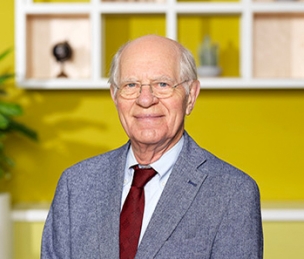Displaying 1 - 12 of 12
-
Levelt, W. J. M. (1983). Monitoring and self-repair in speech. Cognition, 14, 41-104. doi:10.1016/0010-0277(83)90026-4.
Abstract
Making a self-repair in speech typically proceeds in three phases. The first phase involves the monitoring of one’s own speech and the interruption of the flow of speech when trouble is detected. From an analysis of 959 spontaneous self-repairs it appears that interrupting follows detection promptly, with the exception that correct words tend to be completed. Another finding is that detection of trouble improves towards the end of constituents. The second phase is characterized by hesitation, pausing, but especially the use of so-called editing terms. Which editing term is used depends on the nature of the speech trouble in a rather regular fashion: Speech errors induce other editing terms than words that are merely inappropriate, and trouble which is detected quickly by the speaker is preferably signalled by the use of ‘uh’. The third phase consists of making the repair proper The linguistic well-formedness of a repair is not dependent on the speaker’s respecting the integriv of constituents, but on the structural relation between original utterance and repair. A bi-conditional well-formedness rule links this relation to a corresponding relation between the conjuncts of a coordination. It is suggested that a similar relation holds also between question and answer. In all three cases the speaker respects certain Istructural commitments derived from an original utterance. It was finally shown that the editing term plus the first word of the repair proper almost always contain sufficient information for the listener to decide how the repair should be related to the original utterance. Speakers almost never produce misleading information in this respect. It is argued that speakers have little or no access to their speech production process; self-monitoring is probably based on parsing one’s own inner or overt speech. -
Levelt, W. J. M., & Cutler, A. (1983). Prosodic marking in speech repair. Journal of semantics, 2, 205-217. doi:10.1093/semant/2.2.205.
Abstract
Spontaneous self-corrections in speech pose a communication problem; the speaker must make clear to the listener not only that the original Utterance was faulty, but where it was faulty and how the fault is to be corrected. Prosodic marking of corrections - making the prosody of the repair noticeably different from that of the original utterance - offers a resource which the speaker can exploit to provide the listener with such information. A corpus of more than 400 spontaneous speech repairs was analysed, and the prosodic characteristics compared with the syntactic and semantic characteristics of each repair. Prosodic marking showed no relationship at all with the syntactic characteristics of repairs. Instead, marking was associated with certain semantic factors: repairs were marked when the original utterance had been actually erroneous, rather than simply less appropriate than the repair; and repairs tended to be marked more often when the set of items encompassing the error and the repair was small rather than when it was large. These findings lend further weight to the characterization of accent as essentially semantic in function. -
Levelt, W. J. M. (1983). The speaker's organization of discourse. In Proceedings of the XIIIth International Congress of Linguists (pp. 278-290).
-
Levelt, W. J. M. (1983). Wetenschapsbeleid: Drie actuele idolen en een godin. Grafiet, 1(4), 178-184.
-
Levelt, W. J. M. (1966). Generatieve grammatica en psycholinguïstiek I: Inleiding in de generatieve grammatica. Nederlands Tijdschrift voor de Psychologie en haar Grensgebieden, 21, 317-337.
-
Levelt, W. J. M. (1966). Generatieve grammatica en psycholinguïstiek II. Psycholinguïstisch onderzoek. Nederlands Tijdschrift voor de Psychologie en haar Grensgebieden, 21, 367-400.
-
Levelt, W. J. M., & Plomp, R. (1966). Les dimensions dans la perception des intervalles musicaux. Sciences de l'art, 3, 172-182.
-
Levelt, W. J. M. (1966). The alternation process in binocular rivalry. British Journal of Psychology, 57(3/4), 225-238.
-
Levelt, W. J. M. (1966). Some demonstrations of the complementary functioning of the eyes. Perception & Psychophysics, 1, 39-40.
-
Levelt, W. J. M. (1966). The perceptual conflict in binocular rivalry. In M. A. Bouman (
Ed. ), Studies in perception: Dedicated to M.A. Bouman (pp. 47-60). Soesterberg: Institute for Perception RVO-TNO. -
Levelt, W. J. M., Van de Geer, J. P., & Plomp, R. (1966). Triadic comparisons of musical intervals. British Journal of Mathematical & Statistical Psychology, 19(2), 163-179.
-
Plomp, R., & Levelt, W. J. M. (1966). Perception of tonal consonance. In M. A. Bouman (
Ed. ), Studies in Perception - dedicated to M.A. Bouman (pp. 105-118). Soesterberg: Institute for Perception RVO-TNO.

Share this page